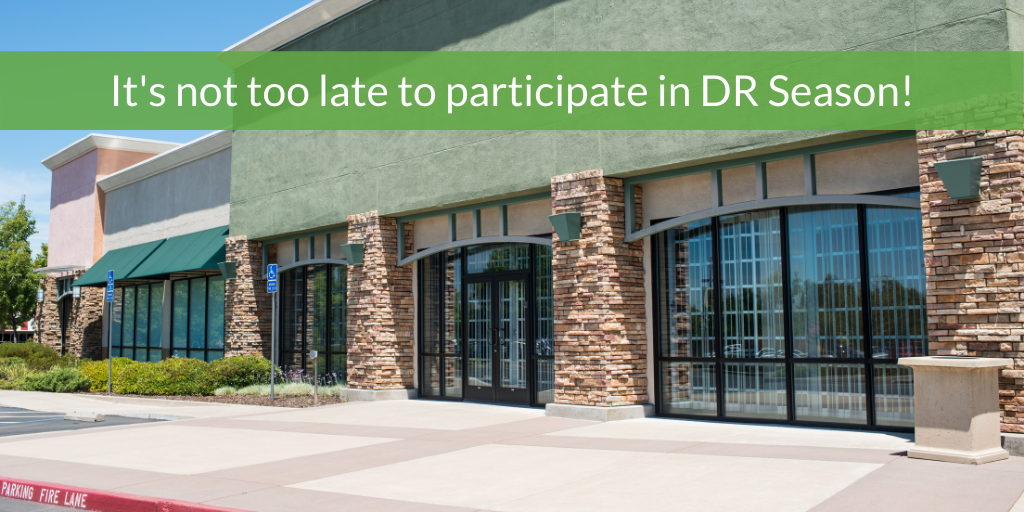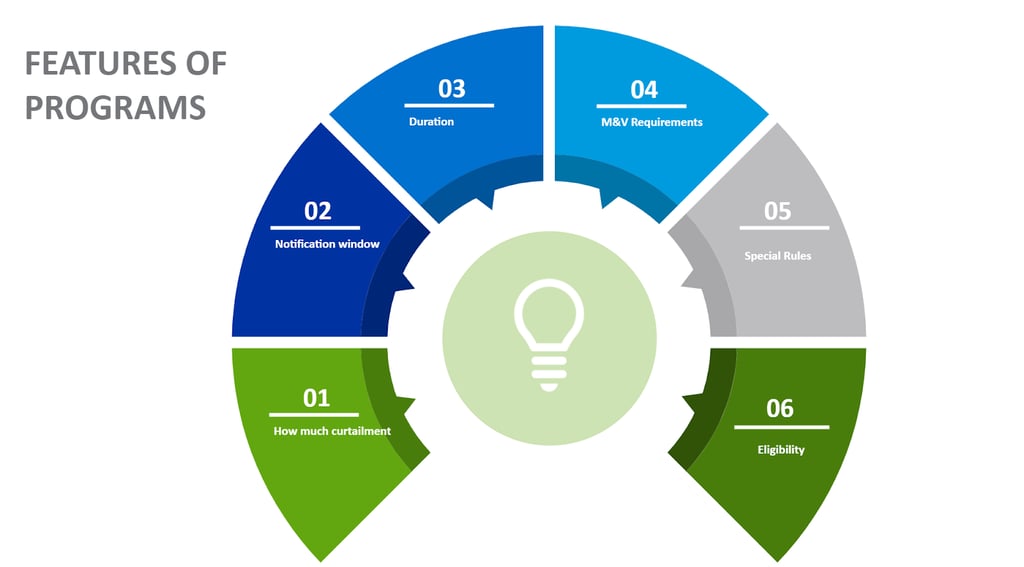Share this
It's Time to Act for Demand Response Season
by Phoenix Energy Technologies on Jan 17, 2022

It's registration time for demand response season! If you have not already begun working with a demand response partner, or if you're not sure whether or not you CAN participate in demand response season, this article is for you.
If you're not already taking advantage of the incentives avaialble from the utilities, you may just think it’s too hard to do. With tedious paperwork, various control systems, utility contracts, and weather patterns, applying for the rebates and incentives can seem daunting. We’re here to say, “you can do it!” And the incentives are worth it.
Want to know more about managing demand events and collecting demand response checks? Let’s talk about the basic types of programs and how you can determine which ones might work for you.
What IS Demand Response?
Demand Response is the act of responding to a utility's need to reduce energy demand to protect the grid. Demand response programs are a type of demand-side management used to decrease customer demand during times of very high system demand or emergencies (like summer).
Utility grids have to maintain a balance between supply and demand. When they can’t, like last February in Texas. consumers and businesses are impacted with blackouts and worse. While too much supply CAN be a problem, the utilities use programs to better manage the demand side of the equation. These programs are lucrative for you, and may be easier to implement than you think.
What are the types of Demand Response Programs?
There are many programs out there by individual utilities as well as the ISOs (independent system operators) like ERCOT. Most of these programs fall under a few main categories, and then have specific requirements and features. First, let’s look at the types.
Load/Peak Demand Response Programs
Load or peak demand programs focus on offering credits for load reductions during peak demand times. Mostly, the utilities want you to reduce your peak, and if enough businesses and residents do so, the entire peak goes down. Critical peak pricing works as both carrot and stick. Incentives to reduce demand when the utility calls for it, and penalties for exceeding your peak.
Critical Peak Demand Events
Utilities identify "critical event" periods when upcoming weather or
emergencies will result in high wholesale market prices as well as risk to the grid. A critical event may be called when extreme heat and humidity are forecast. The main subtypes include:
Direct load-control programs — Turning loads off completely for the duration of the event. For large retailers, turning off your HVAC may not be an option.
Curtailable load programs — Much more common in enterprises, curtailment just asks you to reduce your kW with a minimum threshold, such as 100 kW per event.
Interruptible programs (also base interruptible) — Larger load shed is required. It may be possible if you have backup generators, solar, batteries, EV discharge, or other supply available.
Economic / Price Response
These are the same carrot and sticks, with incentives for lower demand, and penalties for higher demand. The difference is that these tend to be trickier for most enterprises to manage without the help of an aggregator. Essentially, it’s airline pricing for energy.
Economic programs — Require a minimum, sizeable load shed based on market pricing. Participants “bid” to reduce load in exchange for lower prices.
Time-of-use rates — Possibly the very best way to save money at scale across an enterprise, time of use rates are metered pricing that varies by the time of use (ha!) Think of this as the old days of wireless phones, where there were different rates for day versus nights and weekends. In this case, it’s the time of day as well as the time of year - summer and winter generally being higher rates due to increased demand. These rates are on a schedule. If you can schedule your demand around these high prices, you can save a lot of money.
Real time pricing — Similar to the above, but managed like a bidding market, with real-time price changes. This can be very hard to manage without an aggregator managing your bids, but can be just as, or more, lucrative.
Features of Demand Response Programs

Each demand response program you look at will have a number of features that you should consider carefully to see if it’s a good option. Remember, some of these programs have penalties for offering to reduce loads, and then failing to do so.
Eligibility Requirements and Special Rules
Each program will have its own requirements. These may include things like your base rate/rate plan, meter accessibility, geography, etc.
Demand response programs can have special, even wacky rules. Often these are around whether using batteries or generators is allowed in order to be eligible. Be sure to read the terms and conditions very carefully
The amount of curtailment/shed required
Probably the most critical feature is the amount of kW you are required to curtail. You should look at your average kW at the times of day/year that the program you’re considering will likely be called. Then think about whether that amount of shed is reasonable. If you’re worried about occupant comfort, fear not, there are ways to load shed without sacrificing comfort, but first be sure you have enough to shed.
Notification window
The notification windows for demand response events can vary widely. Price programs are fairly static so you already know when you have to curtail, but emergency programs can be called with short notice. There’s a big difference between updating 100 stores in the southeast within a day’s notice, or even two hours' notice, than trying to do so with a five minute notice.
But the very short notice programs can be very, very lucrative since they have high incentives. If you’re using a solution like PhoenixET’s Demand Manager with OpenADR integration or one of our partners, notification window may be less of a concern.
Duration and frequency
The length of the event is another consideration, especially for retailers. Most critical events last around two to four hours. With creative strategies, you can reach your curtailment goals for this period of time without affecting your customers and employees.
If you have good curtailment strategies, the duration may not be a problem, but if you don’t have good operational processes, the frequency might be. Organizing curtailment events at hundreds of stores on multiple building control systems as many as 10 times per month (a recent PG&E program we reviewed) could be difficult
M&V Requirements
Lastly, you will have to consider how you will need to PROVE to the utility that you have met your curtailment requirements. Many programs require a meter (some free or subsidized), but others may require you to submit reports at specific intervals and in specific formats. Make sure you understand how to get your incentive, or all your hard work may not result in an incentive check!
Conclusion
Now you know about what the different types of demand response programs are, but HOW do you curtail 100kW across hundreds of locations and multiple control systems? We’ll handle that in our next post!
Want to learn more? Reach out to our experts for an energy assessment of your portfolio to see how EDX can get you started on managing your energy demand!
Additional Resources:
Energy Efficiency AND Customer Comfort CAN Co-exist
What Retailers Should Know About Demand Management
Share this
- Facilities Management (91)
- Energy Management (69)
- Company News (49)
- Smart Buildings (37)
- Retail (36)
- Building Management (24)
- Building Automation Systems (21)
- Sustainability (20)
- Energy Demand Management (19)
- EEI (15)
- Adaptive Energy Management (14)
- Grocery (14)
- demand response (14)
- Artificial Intelligence (12)
- Data Integration and Visibility (10)
- HVAC IQ (9)
- COVID-19 (8)
- Customer Spotlight (8)
- Carbon Management (7)
- Setpoints and Temperatures (7)
- Equipment Maintenance (6)
- Operational Efficiency (6)
- Refrigeration Optimization (6)
- Ask Ron (5)
- Asset Manager (5)
- Finance and Procurement (5)
- IoT and Digital Transformation (5)
- Awards (4)
- Comfort (4)
- Energy & Store Development (4)
- Safety and Compliance (4)
- Demand Charge Management (3)
- Energy Management System (3)
- Lifecycle Asset Management (3)
- Premium Services (3)
- Refrigeration IQ (3)
- Automated Demand Response (2)
- ConnexFM (2)
- Customer Service (2)
- HVAC Vendor Management (2)
- Load Shedding (2)
- Technician View (2)
- AIM Act (1)
- ALD (1)
- Analytics (1)
- Data (1)
- Data Integration and Visualization (1)
- EMS (1)
- Knowledge Center (1)
- OSHA (1)
- asset management (1)
- December 2025 (1)
- November 2025 (1)
- October 2025 (2)
- September 2025 (1)
- August 2025 (3)
- July 2025 (1)
- June 2025 (1)
- May 2025 (2)
- March 2025 (2)
- February 2025 (1)
- January 2025 (2)
- December 2024 (2)
- October 2024 (1)
- September 2024 (1)
- August 2024 (2)
- June 2024 (2)
- April 2024 (2)
- March 2024 (2)
- January 2024 (1)
- December 2023 (1)
- October 2023 (2)
- September 2023 (2)
- August 2023 (2)
- July 2023 (1)
- May 2023 (2)
- April 2023 (2)
- March 2023 (3)
- February 2023 (1)
- January 2023 (1)
- December 2022 (1)
- November 2022 (2)
- October 2022 (2)
- September 2022 (1)
- May 2022 (2)
- April 2022 (1)
- March 2022 (3)
- February 2022 (2)
- January 2022 (4)
- December 2021 (2)
- November 2021 (3)
- October 2021 (1)
- September 2021 (3)
- August 2021 (4)
- July 2021 (1)
- June 2021 (2)
- May 2021 (1)
- January 2021 (2)
- December 2020 (2)
- November 2020 (2)
- October 2020 (3)
- September 2020 (4)
- August 2020 (3)
- July 2020 (2)
- June 2020 (3)
- May 2020 (3)
- April 2020 (5)
- March 2020 (5)
- February 2020 (4)
- January 2020 (4)
- December 2019 (4)
- November 2019 (3)
- October 2019 (4)
- September 2019 (5)
- August 2019 (4)
- July 2019 (4)
- May 2019 (2)
- April 2019 (3)
- February 2019 (1)
- December 2018 (1)
- November 2018 (1)
- October 2018 (3)
- September 2018 (3)
- August 2018 (3)
- July 2018 (3)
- June 2018 (3)
- May 2018 (1)
- June 2015 (1)
- March 2013 (1)
- January 2013 (1)
- December 2011 (1)
- October 2011 (1)
- September 2011 (1)


